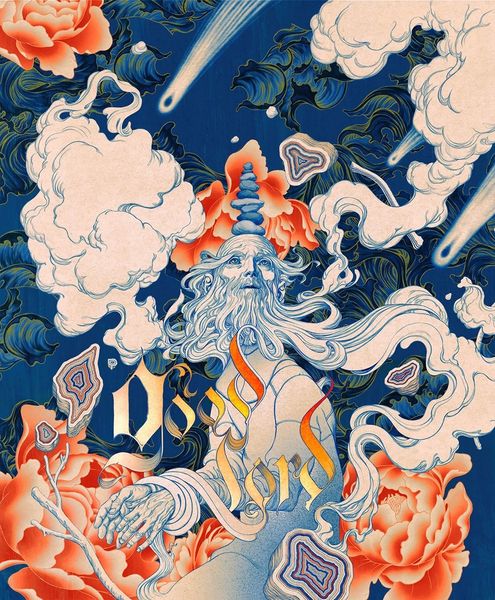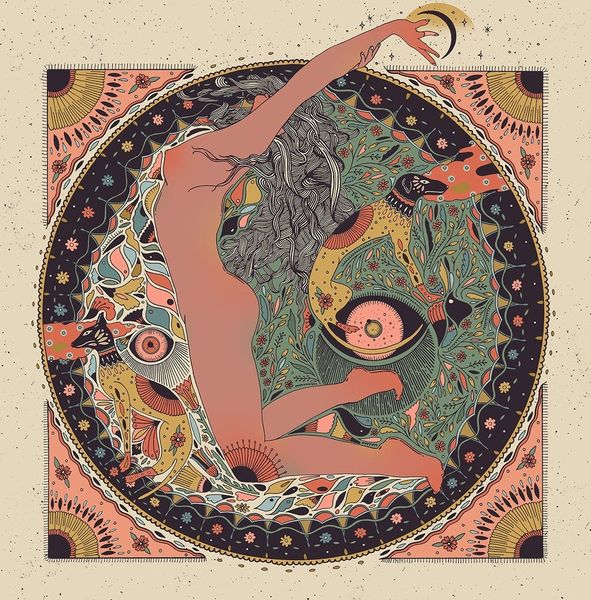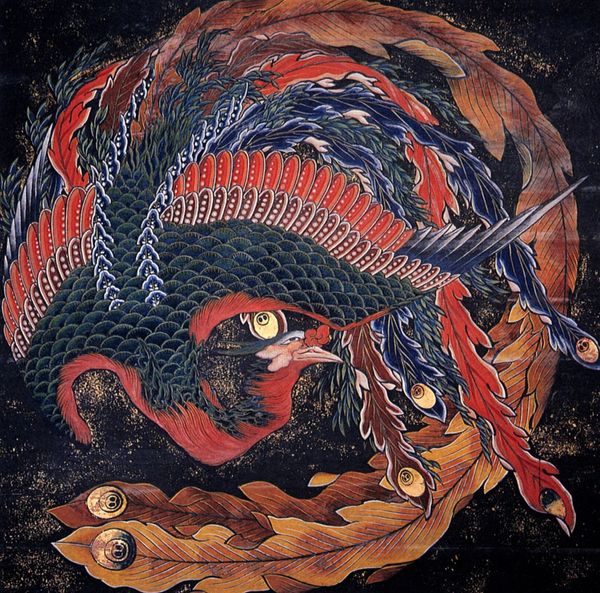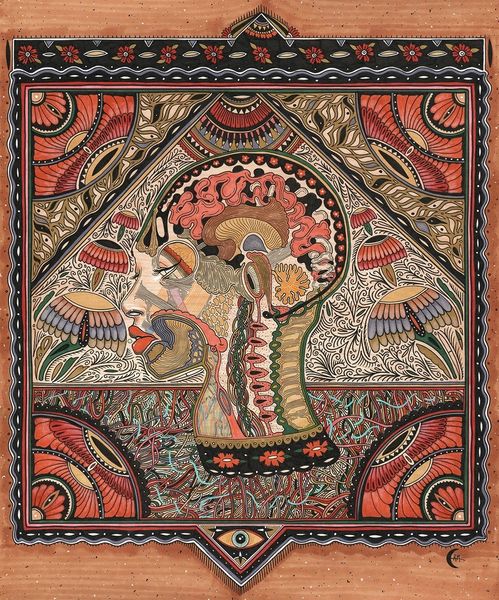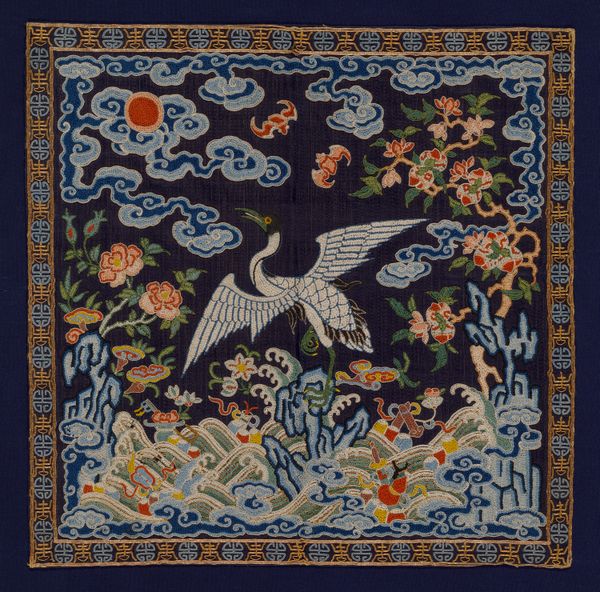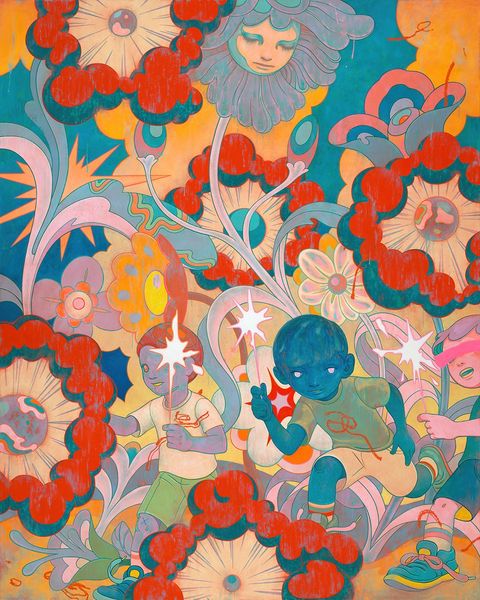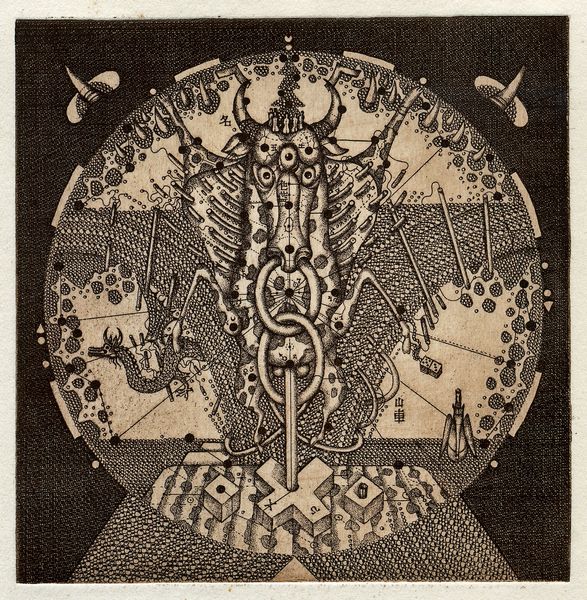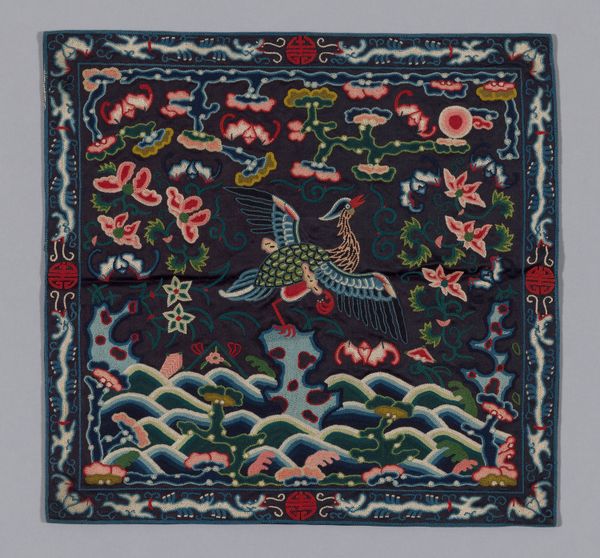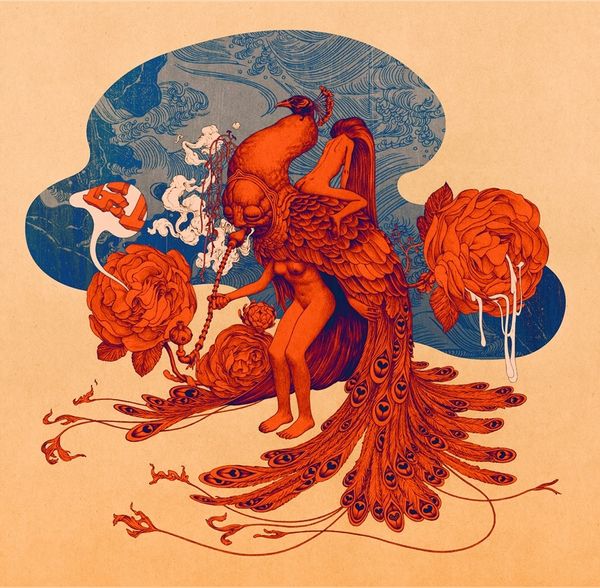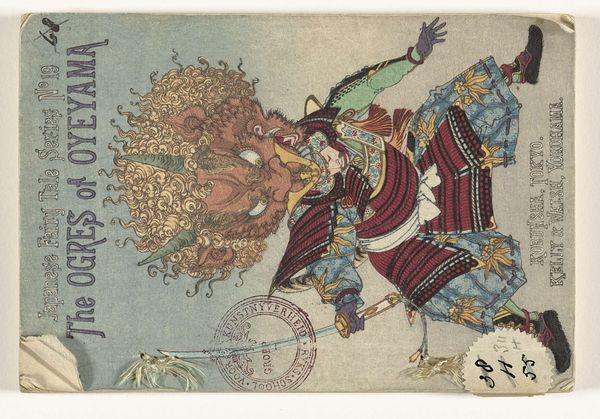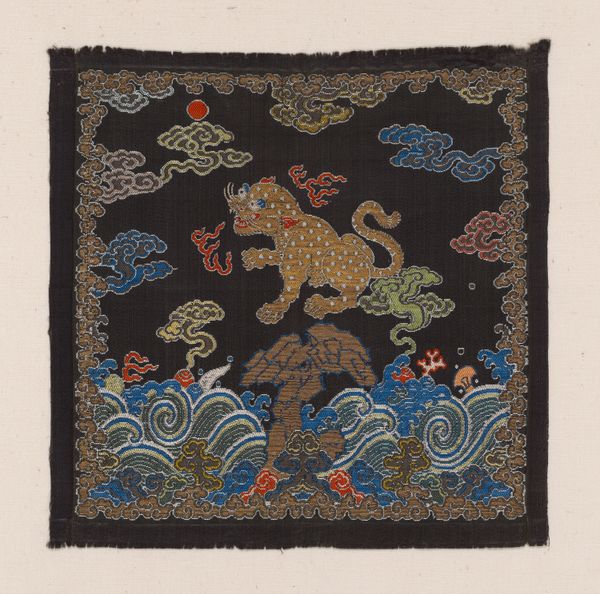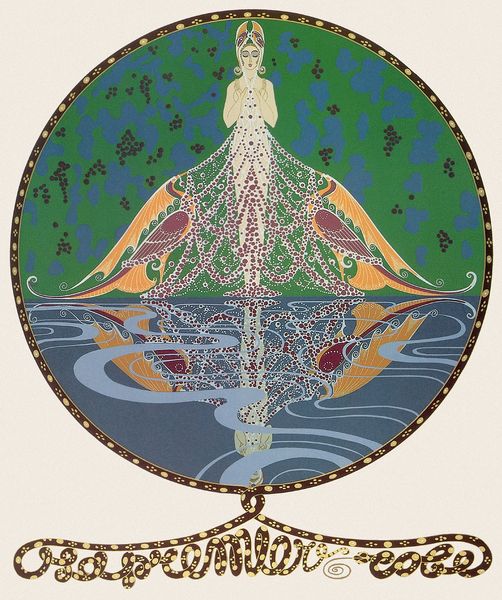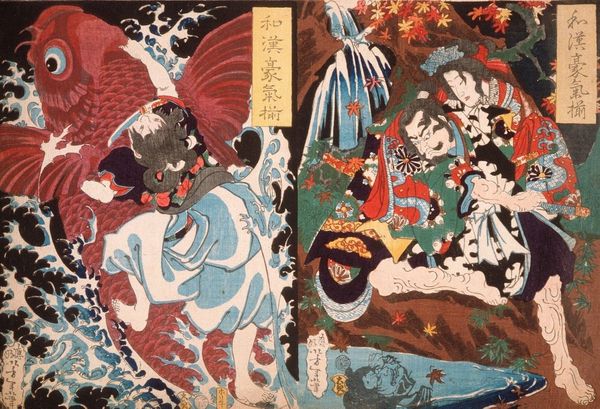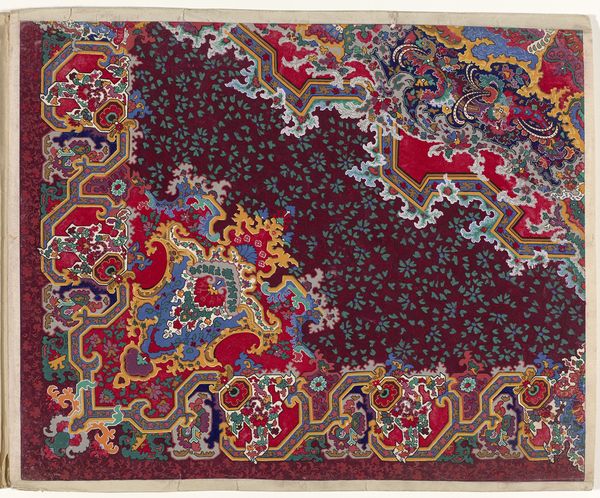
ornament, weaving, textile
#
ornament
#
asian-art
#
weaving
#
textile
#
costume
#
china
#
intricate pattern
#
decorative-art
Dimensions: 28.5 × 28.6 cm (11 1/4 × 11 1/4 in.)
Copyright: Public Domain
Editor: We’re looking at a ‘Buzi,’ a Court Rank Badge, dating possibly from 1825 to 1911. It’s at the Art Institute of Chicago and it seems to be textile art. The intricacy of the woven dragon against the swirling cloud background is captivating. How do you interpret this piece? Curator: It's a powerful visual statement, isn't it? These badges weren't just ornaments, they were loaded with symbolism. The dragon, of course, is a potent symbol of imperial power and authority in Chinese culture, representing the Emperor. Note how the clouds surrounding it are rendered - what feelings do those details suggest to you? Editor: I guess they represent an ethereal realm, or maybe prosperity. It feels almost like the dragon is ascending, going somewhere important. Curator: Precisely! Clouds in this context often signify good fortune, and aspiration. And look at the wave patterns below, grounding the dragon yet also suggesting its emergence from the waters – perhaps symbolic of the rise in status afforded by the court. Considering it’s a ‘rank’ badge, who might have worn it and what do you think that symbolized to onlookers? Editor: Possibly a high-ranking official. Wearing it would instantly communicate their position and authority, right? It's like a visual shorthand for their place in the social hierarchy. Curator: Exactly. Each detail reinforces the wearer's significance within the imperial system, steeped in history and culture. The cultural memory woven into each thread makes the piece so much more than just decoration. Editor: That’s amazing. It really makes me think about how much more there is to see beyond just the surface of a work of art. Curator: Indeed! Hopefully this inspires you to contemplate cultural memory in more pieces moving forward!
Comments
No comments
Be the first to comment and join the conversation on the ultimate creative platform.
